Popular games for platform Atari 5200
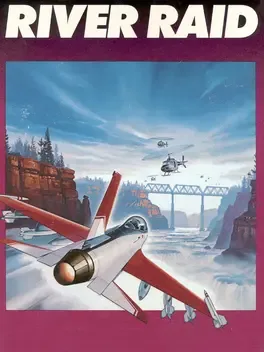
Mission: Code Name River Raid. Jet down the river. Break the enemy blockade and blast the bridges to halt enemy troop advances. Terrain: Code Name River of No Return. An ever-changing, ever-challenging waterway. Expect huge islands, narrow channels and treacherous bays crawling with enemy choppers, tankers and jets. Weaponry: Code Name StratoStrafer. Your B1 StratoWing Assault Jet has been retrofitted with sophisticated, rapid-fire guided missiles. Your craft is super-sensitive to the stick. Accelerate, slow or bank radically with only a touch. Tactics: Jet low to the river to avoid radar. Stop periodically at depots to refuel. A warning claxxon will alert you. Top speed! Best of luck!
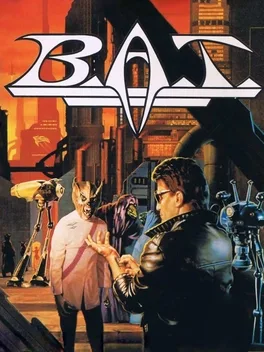
You're actually one of B.A.T. (Bureau of Astral Troubleshooters) sergeants, and a new mission awaits you. Vrangar, a top scientist, and Merigo, a small-time crook, have announced their intention to set off nucturobiogenic bombs in Terrapolis, the largest city on Selenia. The ultimatum leaves the government only 10 days to evacuate the city and draw up a deed of ownership in Vrangor's name. Beyond this time limit, Selenia will be blown out of the galaxy. The countdown has begun, and it's up to you to play and foil Vrangor's evil plans. Don't forget: The Fate Of Terrapolis Lies in your Hands! Be entranced by graphics, sound effects and an atmosphere that are out of this world! Visit over 1100 different places including restaurants, gun-smiths, discos, hotels, arcades, parks, etc... Feel free to stop someone on the street to get information or just to say hello.
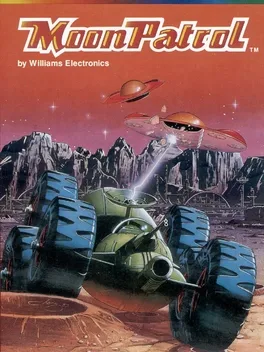
Moon Patrol is a side-scrolling shooter that puts players at the controls of a six-wheeled moon rover that can jump and shoot. The goal is to move through the entire course as quickly as possible while shooting enemies for additional points. Cannons are mounted on the front and top of the vehicle, and both fire simultaneously when the fire button is pressed. Rocks, mines, and pits in the course prevent you from just holding to the right for maximum speed. Rocks and mines can be shot, but pits must be jumped. Some enemies fire shots that create new pits in the course, forcing players to react quickly.
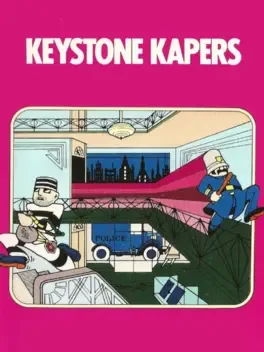
Flash! Harry Hooligan, notorious con-artist, thief and all around-not-a-nice-person, has escaped!! He is now at large and in the vicinity of Southwick‘s Emporium. At this moment, Hooligan is failing every attempt to end his felonious freedom. On the scene is Keystone Kelly, the pride of the men in blue. Officer Kelly, what’s it like in there?” Oh, ‘tis o cryin' shame! Shenanigans like yo wouldn‘t believe! Dastardly deeds that defy description! That rogue is hurlin' everything in reach! Shopping carts, biplanes, beachballs- everything but cathedral radios. LOOK OUT! It's a cathedral radiol! Gotta go! I mean to recover the loot and bust that brute!" Will that double-dyed hoodlum keep Keystone in triple trouble, or will YOU help the greatest gumshoe going catch that no good galoot?? Grab your billyclubs and joysticks! lt's curtains now, Hooligan!"
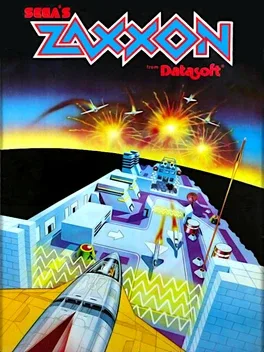
Zaxxon is a 1982 isometric shooter arcade game developed and released by Sega. The game gives the player the experience of flying a fighter craft through a fortress while shooting at enemy entities (missiles, enemy gunfire, etc.) The object of the game is to hit as many targets as possible without being shot down or running out of fuel, which can be replenished paradoxically, by blowing up fuel drums.
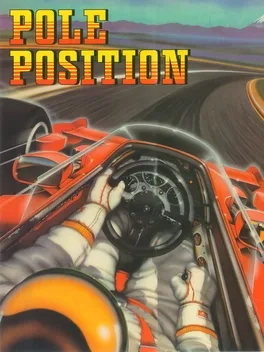
The very first racing game with the rear perspective camera and track based on real life.
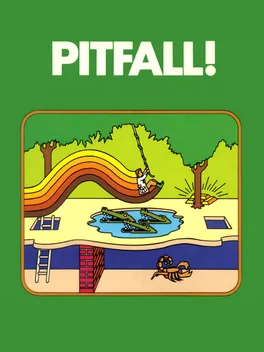
Pitfall! is a video game designed by David Crane for the Atari 2600 and released by Activision in 1982. The player controls Pitfall Harry and is tasked with collecting all the treasures in a jungle within 20 minutes while avoiding obstacles and hazards.
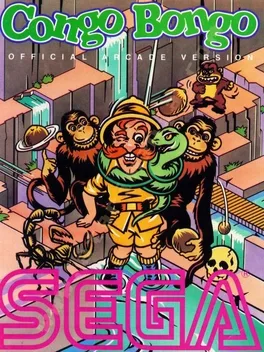
Congo Bongo is an isometric platform arcade game released by Sega in 1983. The game has come to be seen as Sega's answer to the highly successful Donkey Kong game that was released two years prior. The player takes the role of a red-nosed safari hunter who tries to catch an ape named "Bongo". The hunter seeks Bongo to exact revenge for an apparent practical joke in which Bongo set fire to the hunter's tent, giving him a literal "hotfoot". The game was named by Peter W. Gorrie who was the CFO of Sega at that time.
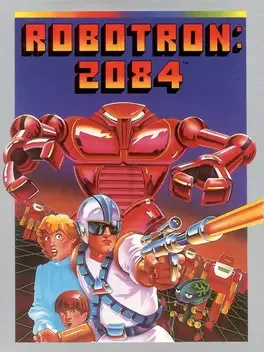
In 2084, man creates a species of super-advanced cyborgs known as Robotrons. Recognizing the imperfect nature of their creators, the Robotrons conclude that the inefficient human race must be exterminated. In Robotron: 2084, only you and a single family of clones remain. If mankind is to survive, you must destroy the Grunts, Brains, Enforcers, and Tanks - but avoid the indestructible Hulks at all cost. Can you withstand wave after wave of android invasion and rescue Mommy, Daddy, and Mikey... before it's too late?
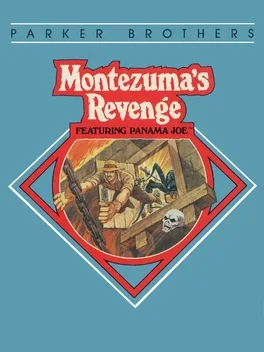
PANAMA JOE, That’s what they call him ‘round these parts; though no one knows his real name or where he comes from. But one thing’s for sure, PANAMA JOE’s a daredevil from the word “go!” No risk’s too great if the reward’s large enough. Winning. That’s what’s the most important to him. And more times than not, that’s exactly what he does. Because he’s tough, clever – resourceful. And sometimes, downright pig-headed! Though occasionally (ah-hum), he’s been known to get in over his head. Luckily, he’s got a knack for getting himself out of hot water as quickly as he gets into it! Let’s hope MONTEZUMA’S REVENGE is one of those times.
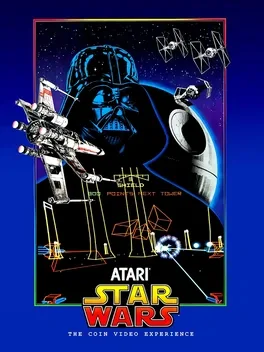
Star Wars is a first-person shoot 'em up based around the original Star Wars film. You take on the role of Luke Skywalker, aiming to destroy the Death Star - which, as any fan knows, involves attacking the 'weak spot' near the exhaust. To even get to this you have to pass swarms of TIE Fighters. Complete the game and it loops back around at ever-increasing difficulty. The game uses vector graphics, which allow lots of action at high speed on comparatively slow systems.
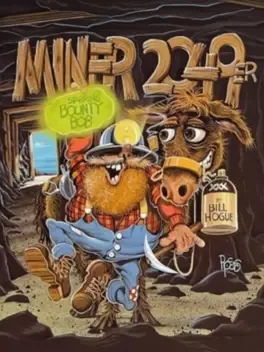
"Bounty Bob" is mining a radioactive mine in the year 2049. Help him "claim" all of the various stations (multiple screens). Avoid contact with the deadly mutant organisms by running away, or hopping over them. Collect various articles left by previous miners for bonus points.
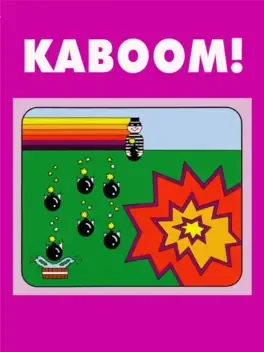
Kaboom! is an unauthorized adaptation of the 1978 Atari coin-op Avalanche. The gameplay of both games is fundamentally the same, but Kaboom! was re-themed to be about a mad bomber instead of falling rocks. Gameplay in Kaboom! consists of using a paddle controller to catch bombs dropped by the Mad Bomber with a set of three buckets. Points are scored for every bomb caught, extra buckets (maximum of three) are awarded at every 1,000 points, and one bucket is lost every time a bomb is missed. As the game progresses, the "Mad Bomber" traverses the top of the screen much more erratically, dropping bombs at increasingly higher speeds, making each of the seven higher levels more difficult.
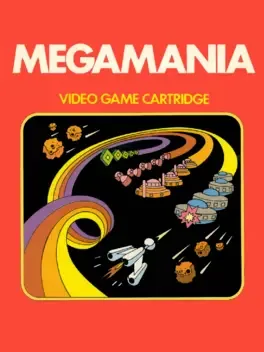
In Megamania, the gameplay resembles that of Space Invaders. Rather than being aliens or spaceships, however, the enemies in this game are various objects such as hamburgers, bow ties, and steam irons. The object is to shoot them down before the energy bar at the bottom of screen is depleted, all while avoiding the oncoming enemies and their own projectiles attacks. Each of the enemies fly in select patterns and as soon as they hit the bottom of the screen, they re-appear at the top until shot by the player. The player's spacecraft depicted in the game is a cross between the U.S.S. Enterprise and Klingon battlecruiser from the Star Trek universe. Gameplay-wise and in terms of graphics, MegaMania bears a very strong resemblance to Sega's 1981 arcade title "Astro Blaster". Both games feature nearly identical patterns of approaching enemies with the player relying on an "Energy" meter. Also, the player's ship bears a remarkable similarity in both games. When Megamania was originally sold, anyone who scored above 45,000 points could send Activision a picture of their screen and become an official Megamaniac. They also would receive an Official Megamaniac emblem.[2] If a player exceeds a score of 999,999 the game ends.
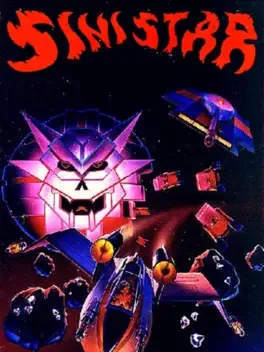
The player pilots a lone spacecraft, and must create "Sinibombs" by shooting at drifting planetoids and catching the crystals that are thereby released. Sinibombs are needed to defeat the game boss, Sinistar, an animated spacecraft with a demonic skull face. Sinistar does not exist at the start of the game, and is continuously under construction by enemy worker ships. Though time is crucial, attempting to mine too quickly will destroy a planetoid without releasing any crystals. Enemy worker ships are also gathering crystals (often stealing them from the player) which they use to construct the Sinistar. Enemy warrior ships can directly attack the player's ship. The player is given a head-start before the enemy ships have enough crystals to begin construction. Game ends when the player's ships are all destroyed. Once the Sinistar is completely formed, a digitized voice makes various threatening pronouncements, including "Beware, I live!," "I hunger, coward!," "I am Sinistar!," "Run! Run! Run!," "Beware, coward!", "I hunger!," "Run, coward!," and a loud roaring sound. The Sinistar has no weapon attacks, but if it contacts the player's ship while it darts about the playfield, the player's ship will be "eaten" and destroyed. A total of 13 Sinibombs are required to destroy a fully built Sinistar, although an incomplete Sinistar can be damaged to slow construction. Each short-range Sinibomb automatically targets the Sinistar when fired, but can be intercepted by a collision with an enemy ship, enemy fire, or a planetoid. The player moves from one zone to the next each time he defeats the Sinistar. A sequence of four zones repeats continuously after the first zone. Each is named for the most numerous feature of that zone: Worker Zone, Warrior Zone, Planetoid Zone, and Void Zone (the Void Zone is especially difficult because it has very few planetoids). Beginning with the first Worker Zone, a completed but damaged Sinistar can be repaired/rebuilt by the enemy ships by gathering more crystals, extending its "lifespan" if the player is unable to kill it quickly.
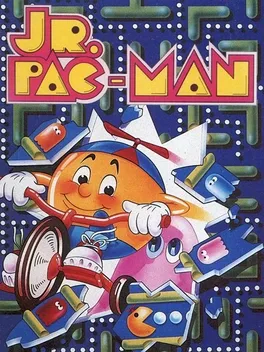
The gameplay of Jr. Pac-Man is similar to that of its predecessors: The player controls the titular Jr. Pac-Man and scores points by eating all of the dots in the maze. Four ghosts roam the maze and attempt to capture him. The player can eat an energizer to turn the ghosts blue, making them vulnerable for a short time and allowing the player to eat them, sending their eyes back to their home base. When all the dots are cleared, a new maze is presented and gameplay resumes.
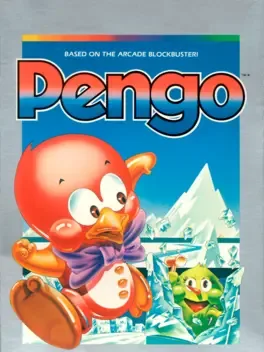
The player controls Pengo, a red penguin that resides in the Antarctic. The game takes place in an overhead maze made of ice blocks, where Pengo fights the trolling, blob-like Sno-Bees. The objective of the game is for Pengo to survive a series of rounds by eliminating all Sno-Bees, while amassing bonuses by bringing together the three diamonds dispersed in the maze.

Mr. Do!, that king of arcade clowns, is in a bit of a bind - again! This time, a pack of pesky unicorns is trampling the bricked hallways of his castle. Help Mr. Do! rid his dwelling of these crafty, quick-changing (and deadly) creatures with the skillful swing of a hammer. Sometimes a quick clobber to the head will do it. Or maybe a well chosen brick knocked out from above. If you can't stop these critters, then break a hole in the floor to slow 'em down. It's up to you to know when to fight - or when to flee! Tension mounts as you hurry Mr. Do! through the castle's maze, grabbing keys along the way. Only when Mr. Do! has collected all the keys can he unlock the castle door, and open up an extra chance to beat these nasty critters!
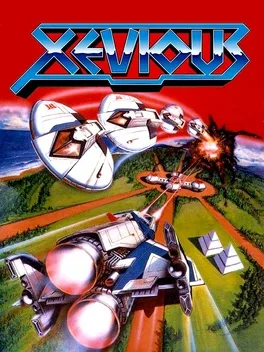
It's a nightmare, but it's true! Research shows that we are the actual aliens on Earth, and the ruthless Xevions are the original inhabitants. Now the Xevions want Earth back -- minus humans! Their invasion forces are fierce -- the land is crawling with deadly Domogram Rovers; the sky is black with Toroid Patrol Fleets and Zoshi Death Squads. Our puny weapons offer no defense. Earth's only hope is our powerful new Solvalou Fighter Plane. Its pilot will have a single mission: Penetrate the enemy ranks and destroy the Xevious Mother Ship. The mission is dangerous. We can't guarantee success. But at this point, it's do or die! One small problem. We still need a pilot. Any volunteers?
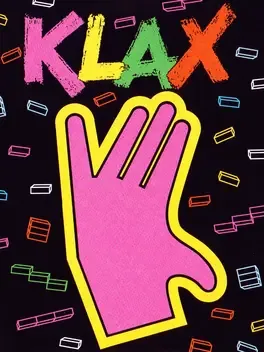
Klax is a 1989 computer puzzle game designed by Dave Akers and Mark Stephen Pierce. The object is to line up colored blocks into rows of similar colors to make them disappear, to which the object of Columns is similar. Atari Games originally released it as a coin-op follow up to Tetris, about which they were tangled in a legal dispute at the time.
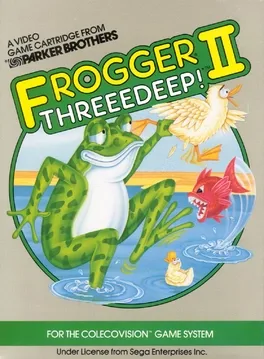
In Frogger II, you need to guide your frog to safety in three different locations. Starting out underwater, reach the top of the pond while avoiding dangerous alligators and fish (you can ride a turtle for safety!). Once on top of the pond, hop across logs, birds, and even a whale to the life preserver trailing behind a tugboat. In the third location you have to hop across a flock of birds to reach a cloud at the top of the screen. Each frog has a time limit to safely reach one of the homes on each of the three screens. You move on to the next level when a frog has safely reached each of the homes on all screens.
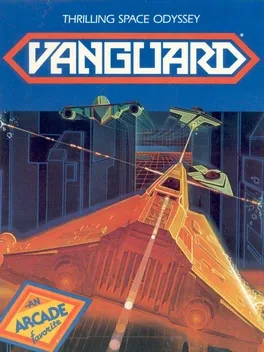
Vanguard is a shoot 'em up game which leads the player through five different zones to the City of Mystery where the creature Gond awaits him which he has to kill. The five zones run horizontally as well as vertically and are filled with different enemies for each zone. Being hit by an enemy, a projectile or the walls results in losing a life. There are, however, collectable items which grant the player a short time of invincibility. Shooting differs somewhat from other shoot 'em ups: The player's ship is able to fire in all four directions depending on the direction the player steers his ship. However, in doing so, the ship flies in that direrction as well which may result in crashing into an obstacle. The ship is constantly running out of fuel which can be replenished by killing enemies. After defeating Gond the game starts anew on a higher difficulty level.
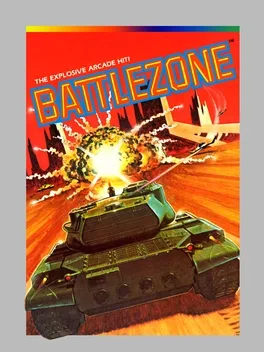
A Port of Battlezone for the Atari 2600. Commonly considered the earliest progenitor of first-person shooters (FPS), Battlezone is a 3D tank game initially released in the arcades, and later converted officially to many systems. Earth has been invaded, and you and your tank lead the defensive effort. You drive around the battlefield from a first-person view, targeting and firing at tanks, planes and UFOs. You have a radar to help you see where the enemies are in direction and distance. Objects can be used as strategic cover. Controls simulate the tracks of a tank realistically, so the direction and speed settings are varied - combining forward right and backward left movements (as you can on keyboard versions) sees you change direction more quickly. A standard enemy tank is worth 1,000 points when destroyed; a supertank is worth 3,000 points; and the flying saucer is worth 5,000 points. The guided missile is worth 2,000 points when destroyed. Each of these targets can be destroyed with a single shot from the player's tank. One bonus tank (a bonus "life" or "man") is awarded when the player's score reaches 15,000 points; an additional tank is then awarded at 100,000 points. The player can hide behind the solids or maneuver in rapid turns once fired on to buy time with which to fire himself.
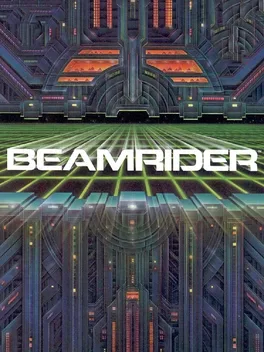
A web of iridescent blue beams engulfs Earth-Space. You stand watching. Mesmerized at first, you now realize the beams support weapons, frightening creations in different forms. Will you just watch or will you take action? Action??!! Then roll up your sleeves, mount these beams and... ride! Animated graphics create a 3D perspective that virtually pulls you into the screen. Pulsating sound effects intensify the action as a dizzying array of objects zips from beam to beam.